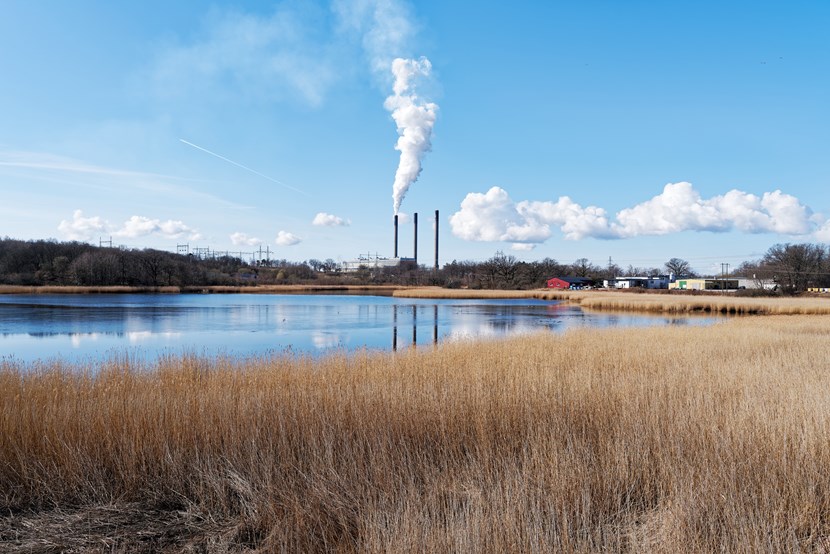Carbon Pricing Significantly Reduces Emissions: New Study
Jan. 16, 2024
Carbon pricing accounts for at least a third of emissions reduction between 1991-2015 in Sweden. Without it, emissions would have been 30% higher, underscoring the importance of effective carbon pricing policies in the global fight against climate change.

From Europe and the US to Brazil and Indonesia, countries around the world are looking into carbon pricing to reduce emissions. However, only until recently, there has been limited evidence on whether it has effectively reduced firm carbon emissions.
Swedish House of Finance researchers Gustav Martinsson (Stockholm University), László Sajtos (NIER), Per Strömberg (SSE), Christian Thomann (KTH) used data from Sweden, which has the world's highest carbon tax rate and was one of the earliest adopters of carbon pricing. They examined Swedish carbon pricing between 1991 and 2015, analyzing its impact on company emissions.
The study found that carbon emissions fell by at least a third during the sample period. It also found that when the price of carbon increases, emissions fall significantly, and that without carbon pricing, Sweden’s carbon emissions in 2015 would have been about 30% higher.
Sweden: an ideal testing ground
Sweden was among the first countries to implement a carbon tax in 1991, and now has one of the highest carbon tax rates in the world.
The data collected from implementing the tax gave the researchers access to detailed emissions data from about 4,000 firms across 23 industries, ranging from steel manufacturing to food production, allowing them to build the most extensive firm-level carbon emissions database to date.
Sweden is therefore an “ideal testing ground” to evaluate how well carbon pricing works, the authors say.
Higher carbon pricing led to lower emissions
The study found that when carbon taxes were higher, companies emitted less carbon both in the short and long term.
In the short term, when carbon taxes are higher, companies exempt from the carbon tax emitted more carbon compared to taxed companies*. Taxed companies maintained their carbon emissions, while exempted ones increased theirs.
When taxed companies received a big marginal carbon tax reduction, their emissions rose significantly. And when non-taxed companies had to pay more tax due to changes in exemptions, their emissions fell, the study showed.
The study also looked at the long-term effects of carbon taxes, which need big investments and changes that take time. They found that a 1% increase in the cost linked to emissions resulted in about a 2% decrease in carbon emissions per unit of sales over three years.
*Carbon emissions relative to firms’ sales, not overall firm emissions.
Financial constraints limit carbon pricing impact
The effect of carbon pricing on a company's emissions depends on how financially restricted they are. To understand this, researchers sorted companies based on their likelihood of facing financial constraints and studied how carbon pricing affected each group. They also checked if carbon pricing had different effects when financial markets were unstable.
They discovered that bigger, established companies that pay out more dividends reduced their emissions more when carbon pricing was in place, compared to financially constrained companies. They also found that during financial upheavals, like the Global Financial Crisis of 2008-2009, carbon taxes had less impact. This suggests that when the financial sector is unstable, it is harder for manufacturing firms to decrease their carbon emissions.
Emissions would have been much higher without carbon pricing
The study found that carbon pricing was behind about a third of the reduced emissions and helped stop emissions from getting much worse.
In industries where reducing emissions is more feasible and cost-effective, such as motor vehicles and electrical equipment manufacturing, companies would have emitted up to 74% more. In sectors like cement and steel production, where cutting emissions is harder and more costly, companies would have had up to 38% higher emissions, the study found.
Overall, if not for these carbon taxes, emissions in Swedish manufacturing would have been about 30% higher in 2015.
1991: Sweden introduces a carbon tax on fossil fuels used in combustion engines and, among others, industrial heating. The tax is based on the amount of CO2 emitted during combustion of the fuel, with caps and exemptions for the firms who were at risk of relocating to another country with lower or no carbon taxes, also known as “carbon leakage”.
Years following: Numerous changes to the carbon tax that affect both rates, tax schedules and exemptions.
2005: The EU introduces a cap-and-trade scheme for CO2 emissions, called the EU Emissions Trading System (ETS). A cap-and-trade scheme sets a limit on the amount of greenhouse gas emissions that companies can release. Companies that emit less than their allocated allowance can sell their unused permits to companies that need them, creating a market for emissions permits. This had major implications for the Swedish carbon tax design.
2008-2011: Sites and facilities that were subject to the EU ETS are gradually phased out of the Swedish carbon tax regulation.
2013: Auctions of emission rights are introduced in the third phase of the EU ETS.
Present day: The Swedish carbon tax continues to be levied on fossil fuels used in combustion engines and heating, still with lower rates for some firms, namely for domestic shipping and diesel used in working machines.
